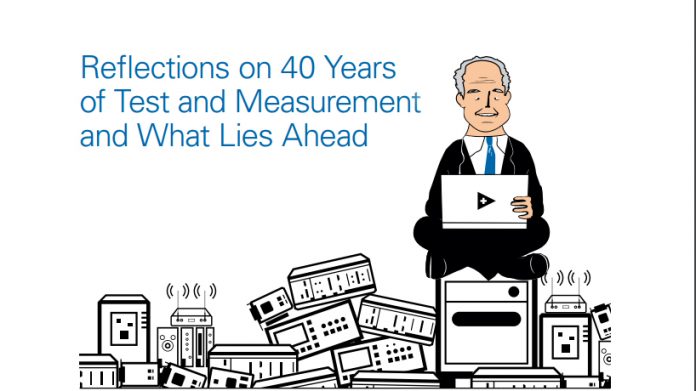A Software-Centric Approach to Hardware Design
When you think about software as uniquely as we have, it’s easy to think differently about hardware, too. Modular, PC-based plug-in boards were a natural by-product. Make the hardware as lightweight and cost-effective as possible (no dedicated screens, power supplies, fixed buttons/knobs, and so on) and focus on ADCs, DACs, signal conditioning, and data movement.
I have yet to see a test and measurement vendor design a user interface better than a customer, for any specific task, that makes the customer more productive. Even the best front panels on box instruments are cluttered with unused buttons or menu structures. Many of our hardware products have size constraints dictated by the I/O connector. Can it get more efficient than that?
The reality is our strategy is more than just efficient; it’s right. Take the new Vector Signal Transceiver (VST), which combines an RF analyzer, RF generator, parallel and serial digital interfaces, and high-performance signal processing into a 2-slot PXI module. This product delivers industry-leading bandwidth (1 GHz), amazing RF performance, and scalability for MIMO applications for one reason: software. We moved as many technical problems into the FPGA as we could, and Moore’s law (along with Xilinx) delivered a vehicle capable of handling the computation. We, in turn, passed the keys to that vehicle over to our customers by allowing them to customize that FPGA with LabVIEW. From 5G cellular technology development to automotive radar and driver assist algorithm development to reductions in the cost of Internet of Things (IoT) devices, the VST and LabVIEW are helping customers achieve goals conventional instruments quite simply prevent them from obtaining.
The Future
We are seeing glimpses of the future everywhere we look. A modern factory features what we call “cyber- physical systems,” which combine software-centric computing technology with electromechanical systems and human operators to improve safety, efficiency,
and cost structures. The acquire, analyze, and the present concept is still valid, but we’ve added “sense, compute, and connect” as a parallel flow for IoT devices. Wireless technology, in general, is pervasive. We’ve been saying this a while, but if you aren’t an RF engineer today, you will be. And the more you connect things, the more you’d be crazy not to take advantage of the data you can collect for billions of sensor nodes. For us, this is Big Analog Data™ solutions, and it’s the richest set of data in the world. NI customers are acquiring terabytes and terabytes of it every day.
“All engineers, scientists, and vendors need to embrace new approaches like this to foster the innovation that will ultimately address the grand engineering challenges of our time.”
—James Truchard, Ph.D., President, CEO, and Cofounder, National Instruments
But even as our capabilities become more advanced and the scale of the problems we try to solve grows vaster, the tools we use must be easier to navigate. Just as machine language migrated to assembly and to object-oriented, other paradigms, including graphical data flow programming, are critical to offering the right level of abstraction. The multi-rate diagram in our LabVIEW Communications System Design Suite is a great example; no single software tool delivered the productivity needed to prototype 5G algorithms until we were bold enough to tackle multiple models of computation inside a single flow that could deploy directly to hardware.
No great innovation will be done alone. The best platforms we use today are effective because they’ve fostered an ecosystem. Our software-centric approach at NI spawned a partner network of more than 1,000 companies and 300,000 active LabVIEW users. The rise of mobile devices and “apps” is possible only because of a healthy ecosystem built on developer-friendly platforms. Team-based development, code sharing, and community support soon will no longer be novel or best in class. They will be expected.
In Closing
It would be impossible to have witnessed what I’ve witnessed in our industry for the past 40 years and not be excited about where all of these technologies and trends are leading us. My advice to any new engineer is simple: develop a vision for the future and pursue it with intensity. And, at the end of the day, don’t be afraid to have fun.
Thank you for 40 great years. I believe the following five selections from the Automated Test Outlook archive are as true today as the day they were published initially. May they inform your vision for the future and bring you and your orga nization prosperity and success.
nization prosperity and success.





